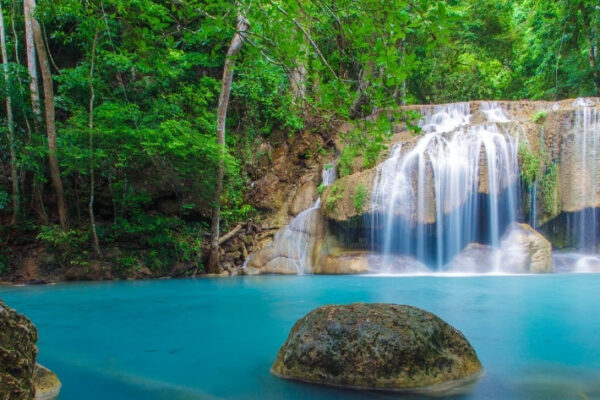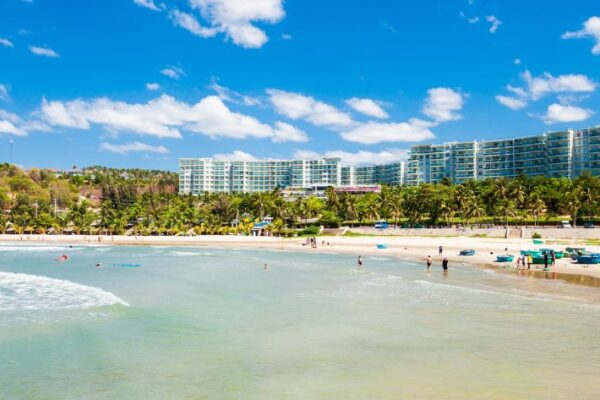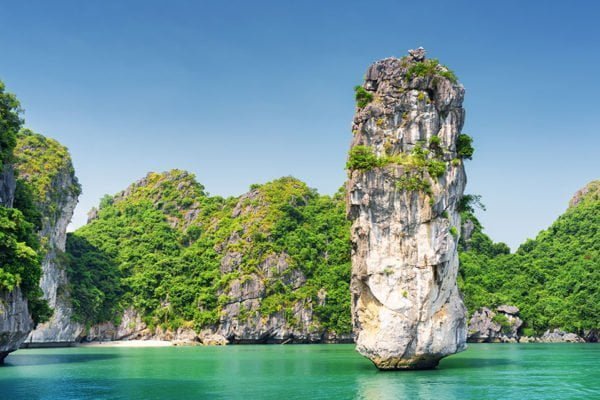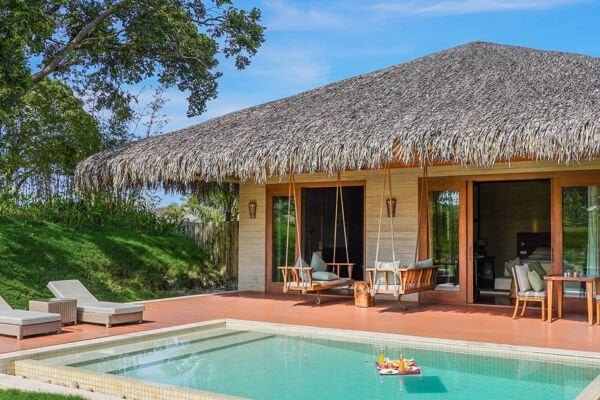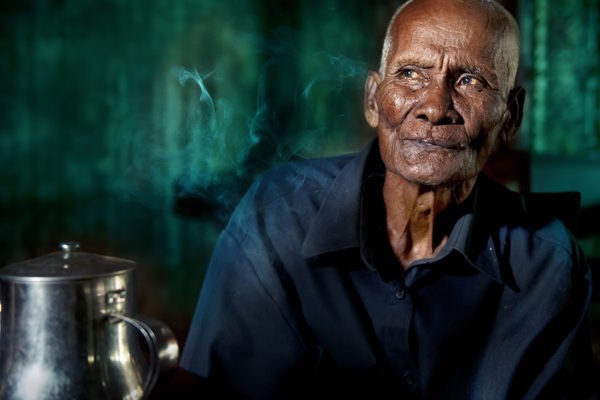How to Plan Multi-Country Tours To Thailand, Cambodia, and Vietnam Without the Stress
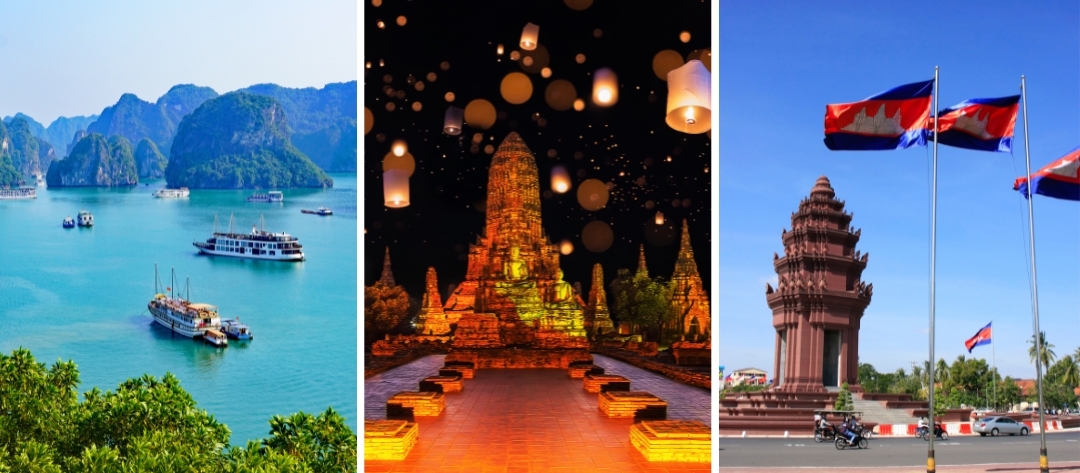
Exploring Southeast Asia through a multi-country journey offers unmatched cultural diversity, natural beauty, and unforgettable experiences. With rich histories, vibrant street life, and world-famous landmarks, Thailand, Cambodia, and Vietnam each bring something unique to the table. However, planning across borders can be overwhelming.
This guide of tours to Thailand Cambodia and Vietnam will simplify the process, helping you navigate visas, transportation, and itineraries with ease. Whether you’re dreaming of Angkor Wat at sunrise, cruising Halong Bay, or tasting Thai street food in Bangkok, we’ll show you how to enjoy it all without the stress.
Best Time to Visit: Navigating the Seasons
The best time to plan tours to Thailand Cambodia and Vietnam is from November to April. While each country has its own climate and festival calendar, this period offers the most consistent and comfortable conditions for a multi-country trip.
This period offers the most favorable weather overall, with cooler temperatures, lower humidity, and minimal rainfall, making it ideal for sightseeing, outdoor activities, and cross-country travel. Whether you’re exploring ancient temples in Cambodia, island hopping in Thailand, or cruising Ha Long Bay in Vietnam, you’ll find the conditions more comfortable and crowd levels manageable.
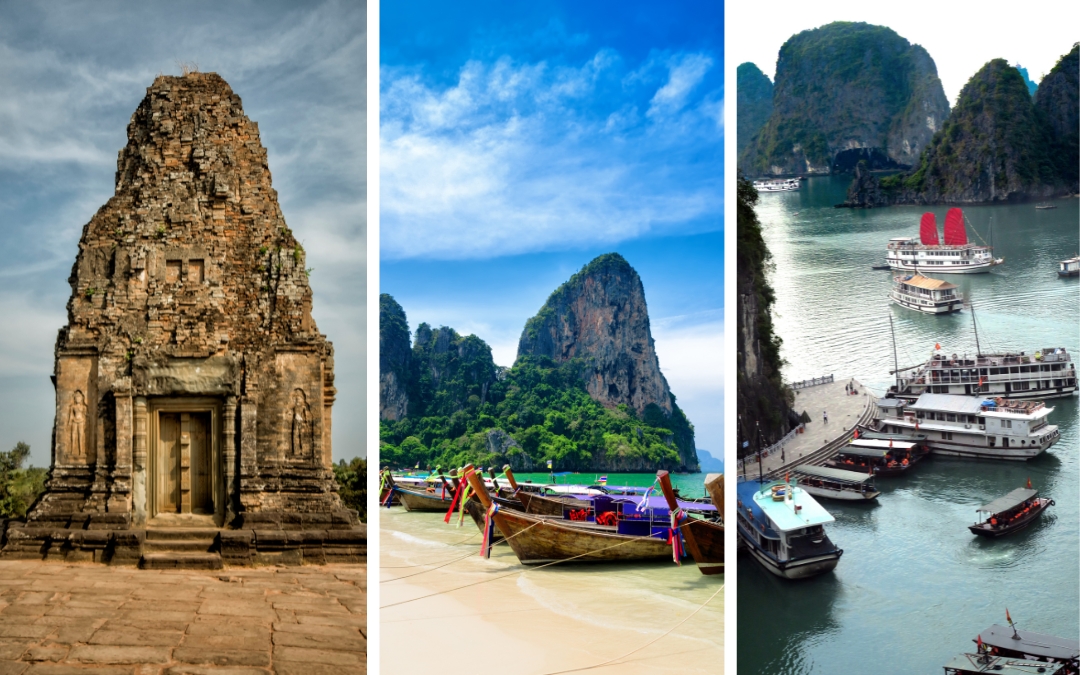
Travelers should visit during the dry season for the best weather.
Beyond the weather, this window also aligns with some of the region’s most iconic festivals, giving travelers a chance to dive deeper into local traditions:
Vietnam: Tet Festival (Vietnamese Lunar New Year) — late January or early February. The country’s most important celebration, filled with vibrant customs, family gatherings, and symbolic foods.
Cambodia:
- Khmer New Year — mid-April, marking the end of the harvest with nationwide celebrations, temple rituals, and water games.
- Water Festival — in November, with spectacular boat races celebrating the natural reversal of the Tonle Sap River’s flow.
Thailand:
- Loy Krathong — in November, where thousands of lotus-shaped baskets float down rivers in a festival of light and renewal.
- Songkran (Thai New Year) — mid-April, famous for its joyful water fights and deep cultural symbolism.
>> Read more: The Best Time To Visit Vietnam And Cambodia
Visa Requirements for Thailand, Cambodia, and Vietnam
Visa rules may vary, but with a bit of preparation, traveling between Thailand, Cambodia, and Vietnam can be a smooth and stress-free experience. Here’s what you need to know for each country:
Thailand: Easy Entry With a Few Conditions
For most travelers, Thailand offers generous visa-free access, especially for tourists staying under 60 days. However, don’t overlook the small but important details:
- Visa-free for up to 60 days for many nationalities, including the U.S., UK, EU, Australia, and ASEAN countries.
- Pre-arrival online registration is required for visa-free travelers (especially post-2024 policies).
- Your passport must be valid for at least 6 months from your date of entry, and have at least one blank page.
- Immigration officers may ask for proof of onward travel or sufficient financial means.
- Overstaying your visa, even unintentionally, can result in fines, detention, or deportation.
Pro tip: Keep a copy of your passport and entry stamp on your phone or in your bag, especially when moving around different provinces.
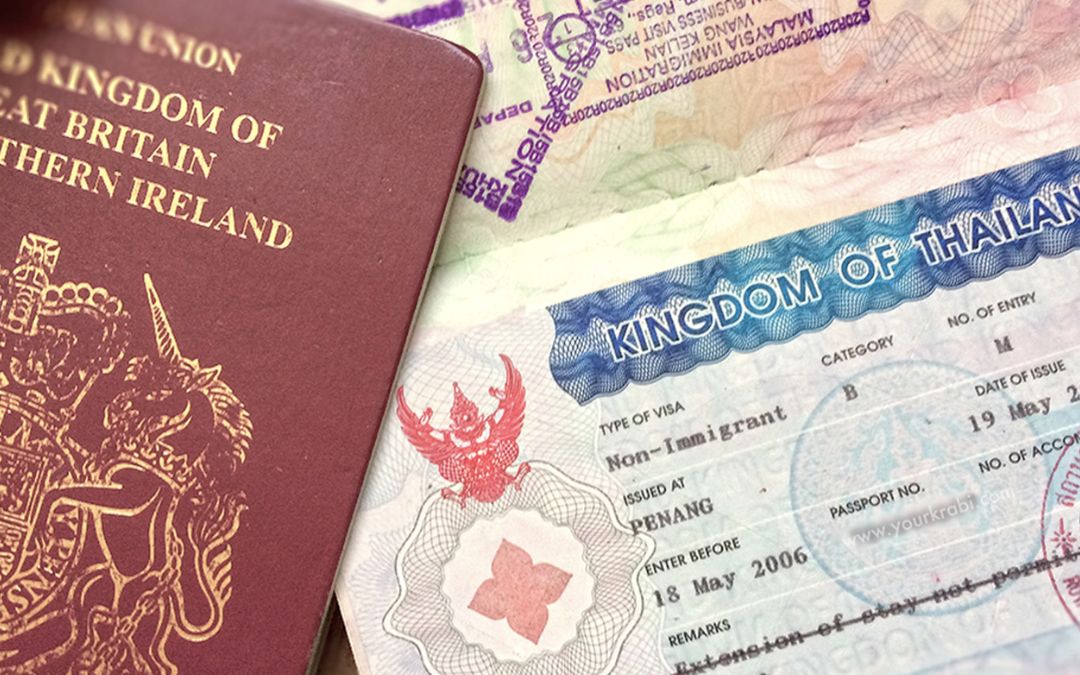
Thailand allows easy entry with just a few simple conditions.
>> Read More: What You Need to Know About the Thailand Digital Arrival Card
Cambodia: Visa on Arrival or e-Visa – Both Are Simple
Cambodia has one of the most straightforward visa systems in Southeast Asia. Most travelers can get a visa at the border or apply online before arrival:
1. Visa on Arrival: Available for almost all nationalities at airports and land borders; costs $30 for 30 days (tourist visa).
2. e-Visa: Apply online through the official site, get approval within 3 business days, and enter via major checkpoints.
3. Visa-free travel:
- 30 days for ASEAN nationals like Vietnam, Indonesia, and Singapore
- 14 – 15 days for travelers from Brunei, Myanmar, Thailand, and Seychelles
From January 2025, all air travelers must complete the new Cambodia e-Arrival Card online within 7 days of arrival, replacing paper forms.
Pro tip: Always carry USD in small bills for visa fees or border formalities—ATMs may not be available at remote crossings.
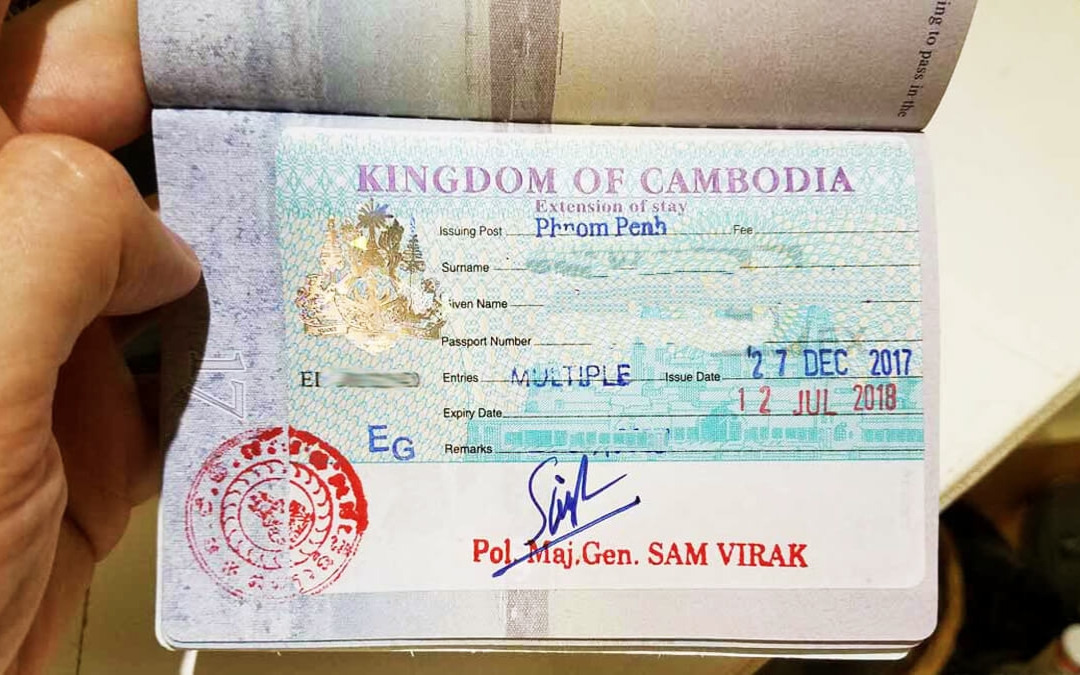
Most visitors find Cambodia’s visa process quick and convenient.
Vietnam: More Flexible Than Ever
Vietnam has updated its visa policy recently, making it easier for international travelers to explore the country, especially on multi-country trips:
e-Visa: As of August 2023, citizens of all countries are eligible.
- Valid for up to 90 days, single or multiple entry.
- Apply online and receive approval in ~3 days.
Visa exemption:
- 45 days for citizens of France, Germany, the UK, Italy, Spain, and more
- 30 days for ASEAN countries like Thailand, Cambodia, Malaysia
- 14 – 21 days for select countries like Brunei and the Philippines
Phú Quốc visa-free policy: Travelers flying directly to the island can stay up to 30 days without a visa — perfect for a beach detour.
Visa on arrival: Only available if you’ve secured a pre-approval letter from a Vietnamese agency.
Pro tip: The e-Visa is the safest and most flexible option. Just double-check that your port of entry/exit is on the approved list before booking flights.

Vietnam now offers more flexible entry rules than before.
>> Read more: Vietnam Visa-Free Countries in 2025: Who Can Travel Vietnam Without a Visa
Ideal Itinerary for Tours to Thailand, Cambodia, and Vietnam
This 16-day journey is perfect for travelers who want to explore Southeast Asia. The multicountry journey will take you through the region’s most iconic sites. You will discover ancient temples, cruise through limestone bays, and taste local street food. Each country offers a unique mix of culture, nature, and history. This itinerary helps you enjoy the best of all three countries without feeling rushed.
Day 1 – 3: Hanoi & Halong Bay (Vietnam)
- Begin your journey in Hanoi, Vietnam’s elegant capital, with a walking tour through the Old Quarter’s labyrinth of lanes, where traditional shops, colonial architecture, and vibrant local life set the tone for your Southeast Asian adventure.
- Visit iconic landmarks such as the Ho Chi Minh Mausoleum, One Pillar Pagoda, Temple of Literature, and the sobering Hoa Lo Prison, then unwind with a street food tour sampling bun cha, egg coffee, and local beer.
- Travel to Halong Bay for an overnight cruise among limestone karsts. Enjoy kayaking through hidden caves, visiting Sung Sot Cave, sunset on deck, and optional squid fishing before sleeping aboard a traditional wooden junk boat.
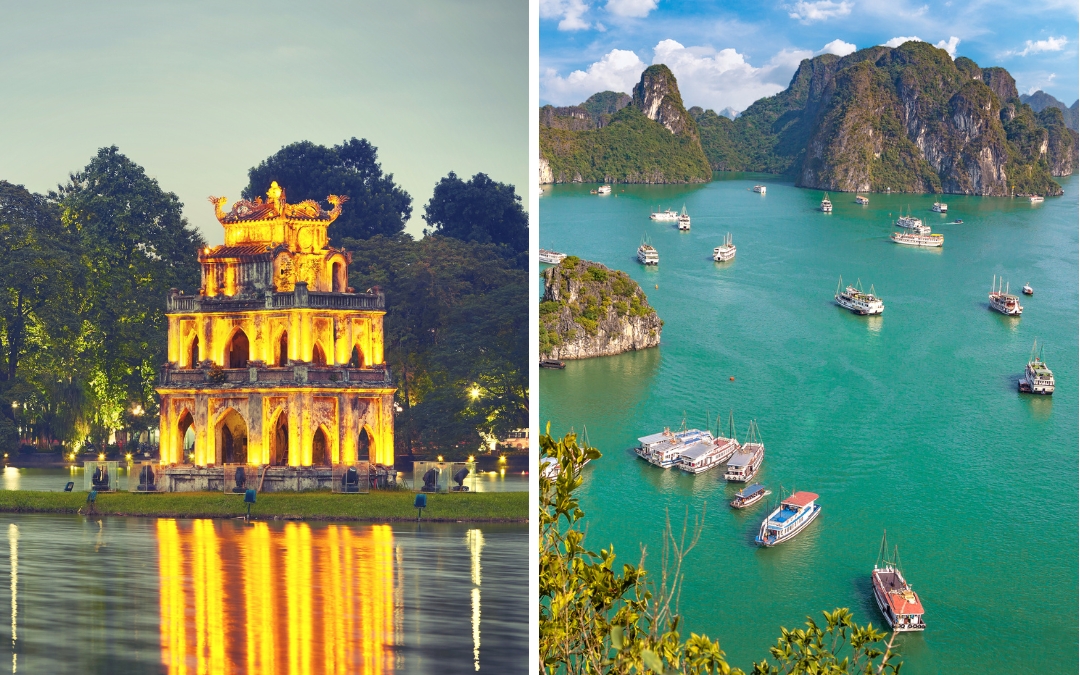
You can start your journey in Hanoi and cruise through Halong Bay.
Day 4 – 7: Hoi An & Hue (Vietnam)
- Fly to central Vietnam and explore Hoi An Ancient Town, a UNESCO World Heritage Site known for its preserved merchant houses, colorful lanterns, and riverside cafes. Try local dishes like cao lầu and take a food tour through hidden alleys.
- Discover Hoi An’s rural charm by cycling through rice paddies to a fishing village, sailing a basket boat through coconut forests, and visiting Tra Que vegetable village for a herbal foot soak and a local cooking session.
- Transfer over the scenic Hai Van Pass to Hue, stopping at Marble Mountains and My Khe Beach. Upon arrival, enjoy a peaceful cruise along the Perfume River and visit Thien Mu Pagoda and the vibrant Dong Ba Market.
- Dive into Hue’s royal history with a full-day city tour of the Imperial Citadel, Tu Duc’s Tomb, and Thanh Toan Village. End the day with a sunset over Vong Canh Hill and visit a family workshop for incense and conical hat making.
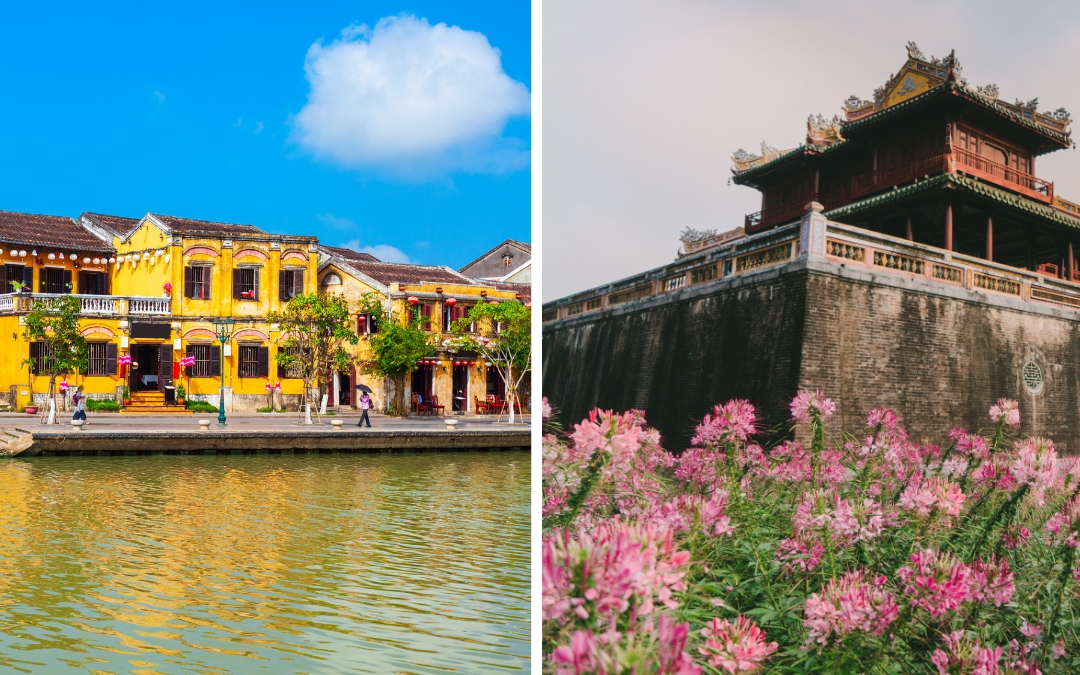
Hoi An enchants, while Hue recalls Vietnam’s royal past.
Day 8 – 10: Ho Chi Minh City & Ben Tre (Vietnam)
- Fly south to Ho Chi Minh City and explore its energetic blend of old and new: admire colonial buildings like the Central Post Office and Notre Dame Cathedral, browse Ben Thanh Market, and learn war history at the War Remnants Museum.
- Take a day trip to the Cao Dai Holy See to witness a colorful noontime ceremony, then explore the Cu Chi Tunnels to understand how Viet Cong soldiers lived and fought underground during the Vietnam War.
- Venture into the Mekong Delta at Ben Tre: cruise canals under coconut palms, visit cottage industries, taste fresh tropical fruits, and glide through quiet backwaters in a sampan. End the day with a sunset drive back to Ho Chi Minh City and board a short flight to Siem Reap, Cambodia.

Visitors enjoy lively streets in Ho Chi Minh and calm canals in Ben Tre.
Day 11 – 13: Siem Reap & Angkor Temples (Cambodia)
- Explore the awe-inspiring ruins of Angkor, beginning with Angkor Thom, the Bayon Temple’s 216 smiling faces, and the jungle-wrapped Ta Prohm (the “Tomb Raider temple”). Marvel at the massive moats and sacred walkways of Cambodia’s ancient capital.
- Witness sunrise at Angkor Wat, then wander through its immense courtyards, bas-reliefs, and towers that represent one of the world’s most iconic architectural wonders. Later, visit Banteay Srei’s pink sandstone carvings and hike to Kbal Spean’s sacred riverbed sculptures.
- Take a boat ride through Kompong Phluk floating village on Tonle Sap Lake. Enjoy an ox cart ride, explore stilt houses and mangrove forests, and witness daily river life before flying to Bangkok in the evening.
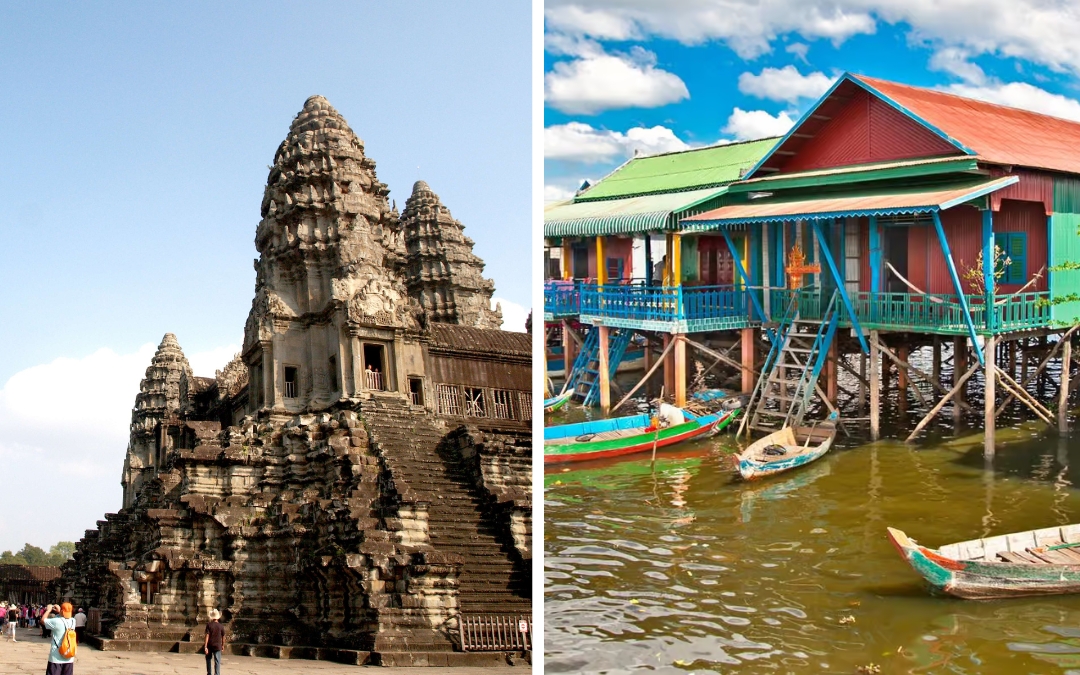
Many explore ancient wonders in Siem Reap and the Angkor Temples.
Day 14 – 16: Bangkok & Ayutthaya (Thailand)
- Discover Bangkok’s spiritual and royal landmarks, including the Grand Palace, Emerald Buddha Temple, Wat Pho with its reclining Buddha, and Wat Arun by riverboat. Take a longtail boat ride through the city’s khlongs (canals) to see traditional Thai life up close.
- Join a guided tuk-tuk food tour through Bangkok’s buzzing night streets. Savor iconic dishes like pad Thai, tom yum, and mango sticky rice, visit the flower market, and end your evening with rooftop cocktails overlooking the Chao Phraya River.
- Take a full-day trip to Ayutthaya Historical Park, the former capital of Siam. Visit the ruins of ancient temples, including Wat Phra Sri Sanphet and Wat Mahathat, known for the Buddha head entwined in tree roots, then return to Bangkok for a final night.
- On the last day, enjoy free time for last-minute shopping or relaxation before your private transfer to the airport for your onward journey or flight home.

Bangkok buzzes with life; Ayutthaya whispers of history.
>> See Tour: Vietnam Cambodia Thailand Tour 16 Days
Essential Tips for a Perfect Trip
To make the most of your tours to Thailand Cambodia and Vietnam, it’s important to plan and understand local travel logistics, food culture, and etiquette. These essential tips will help you travel smart, stay comfortable, and immerse yourself in the rich culture of each country.
Transportation Tips
- Regional travel: Flights are the fastest way to travel between countries. Airlines like Vietnam Airlines, Cambodia Angkor Air, and Thai Airways offer reliable connections.
- Cross-border buses: For budget travelers, overland buses provide affordable and scenic routes between key cities like Ho Chi Minh City, Phnom Penh, and Bangkok.
- In-town mobility: Use tuk-tuks and motorbike taxis for short distances. For convenience and safety, ride-hailing apps like Grab are available in most major cities.
- Travel tip: Always confirm prices before hopping in a tuk-tuk or taxi, especially in tourist-heavy areas.
>> Read More: Transportation in Vietnam – A Comprehensive Guide for Tourists
Accommodation Options
- Boutique hotels: These often reflect local design and offer a cozy, authentic experience with personalized service. Ideal for travelers who appreciate character and culture.
- Luxury resorts: Ideal for honeymooners or those seeking tranquility, resorts in destinations such as Halong Bay or Siem Reap offer world-class facilities and stunning scenic settings.
- Budget hostels: Common in backpacker hotspots like Hanoi’s Old Quarter or Bangkok’s Khao San Road, they provide affordable beds, social lounges, and tour booking help.
- Booking tip: Reserve early during holidays or festival seasons (e.g., Tet in Vietnam, Songkran in Thailand) to get the best availability and price.
Unique Gastronomic Experiences
Southeast Asia is a paradise for food lovers, and each country offers iconic dishes:
- Thailand: Savor spicy and sour flavors with Pad Thai, Tom Yum Goong (spicy shrimp soup), and Mango Sticky Rice from bustling night markets.
- Cambodia: Try Fish Amok (steamed fish curry in banana leaves), beef Lok Lak, and the refreshing rice noodle dish Num Banh Chok for breakfast.
- Vietnam: Enjoy a warm bowl of Phở, crunchy bánh mì sandwiches, and light, fresh spring rolls (Gỏi cuốn) with dipping sauce in local eateries or street stalls.
Cultural Etiquette
Respecting local customs will enhance your interactions and leave a positive impression:
- Dress modestly: When visiting temples or royal sites, wear clothing that covers shoulders and knees. Many locations offer sarongs at the entrance.
- Greetings matter: Learn a few basic phrases – “Sawasdee” in Thai, “Choum Reap Suor” in Khmer, and “Xin chào” in Vietnamese – to connect better with locals.
- Hydration & health: Southeast Asia’s climate is hot and humid, so carry bottled water and sunscreen. Avoid tap water unless confirmed safe.
- Etiquette tip: In many temples, removing shoes before entering is a sign of respect – look for signs or follow the locals.
Health and Safety Precautions
Staying healthy and safe is key to enjoying your tours to Thailand Cambodia and Vietnam. With a few simple precautions, you can minimize risks and travel with peace of mind.
- Vaccinations: Before departure, consult your doctor or a travel clinic about recommended vaccinations. Common ones include Hepatitis A and B, Typhoid, Tetanus, and in some cases, Japanese Encephalitis or Malaria prevention (especially for rural or jungle areas).
- Travel insurance: Comprehensive travel insurance is highly recommended. It should cover medical emergencies, hospital stays, trip delays, and cancellations. Ensure your policy includes coverage for adventure activities, such as kayaking or motorbike riding, if you plan to participate.
- Local scams: Like any tourist destination, petty scams can happen. Stay alert for common tricks such as overpriced taxis, fake tour agents, or “friendship” bracelet sellers. Research trusted service providers in advance and always agree on prices beforehand.
- Health tips: Carry basic medication for upset stomachs, mosquito repellent, and sunscreen. Avoid drinking tap water; opt for bottled or filtered water instead.
Start Your Southeast Asia Journey with Confidence
A journey through Vietnam, Cambodia, and Thailand offers more than just beautiful landscapes — it’s a deep dive into centuries-old cultures, world-famous cuisine, and unforgettable local experiences.
Whether you’re cruising Halong Bay, exploring Angkor Wat, or tasting Bangkok’s street food, tours to Thailand Cambodia and Vietnam promise memories that last a lifetime. With a well-crafted itinerary, your trip can be seamless, enriching, and truly immersive.
Start crafting your story with Asia Pioneer Travel — not just a tour, but your own Southeast Asian chapter!
